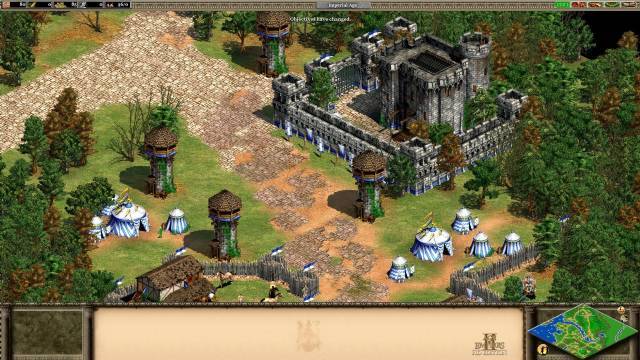The Saladin who turns (and trades)
The 1993 edition of Giochi Senza Frontiere is hosted in Venice. One of the first challenges is to reach (by means of a “ship” composed of two athletes) a buckwheat dummy.
This done a third athlete (over the ship) must unroll a dress from the life of the puppet, while avoiding the “blows” that the sarcastic assists turning on himself. The metaphor was simple enough: the Republic of Venice bought precious goods from the Orient and fought with the Moors to preserve their exchanges.
Now, let’s think of a moment: every player in the 1990s has virtually done such a thing, at least once. Maybe not with the dummy that rotates, but for every PC strategist the control and defense of commercial routes has always been an important point. And many will have learned it thanks to Age of Empires II: The Age of Kings . A game where to understand (first) and control (then) the commercial routes of each scenario was an enterprise worthy of a summer.
Community first, then empire
Age of Empires II: The Age of Kings comes out in 1999, developed by Ensemble Studios and released by Microsoft. It is the follow-up to what had been an unexpected surprise for the times: the first Age of Empires had received unanimous consensus, making the strategy popular in real time.
Age of Kings is even more successful, and deserves an expansion: The Conquerors , which is released the following year and includes the conquest of the Americas. The Ensemble title was still popular today, so to induce Microsoft to develop three more unpublished expansion after the game was republished on Steam in HD in 2013.
If the first covers the classical world (with Greece in the base game and Rome in the subsequent expansion), the sequel continues banal (but effectively) in history: from the ancient world it passes to the Middle Ages. Developers take advantage of the storyline of great personalities of the time, from the tutorial campaign of William Wallace to Saladin, passing obviously for Barbarossa and Joan of Arc.
It all began with the choice of a civilization among the thirteen available. A decision that is like a beating character: you are fond of it, you are beginning to know it and become familiar with the design of buildings and its “miniatures” (units). Since the creation of workers and the construction of structures, up to the accumulation of resources and the creation of the army, improvement over the previous one is clear and precise.
So soon the town was populated by inhabitants, immediately assigned to food, wood, and stone. Age of Empires IIwas built to work in progress: in the face of a slow start, production would have been growing steadily. An idea that children often translate into accumulation of resources, in the satisfaction of seeing zeros grow on the interface counters.

